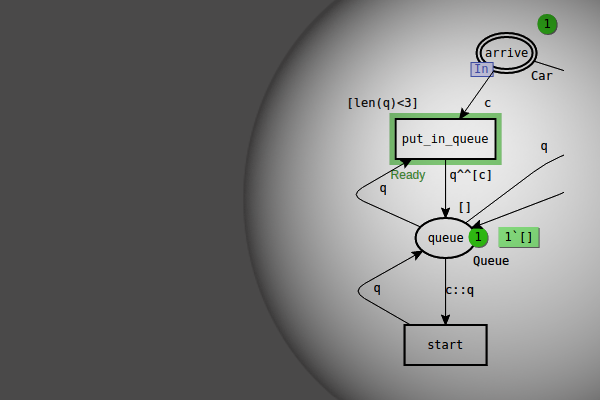Statistics are calculated for each of the data collector monitors. These statistics can be accessed via predefined functions for each data collector monitor. In the following, we assume that a data collector monitor with the ML name DC has been created.
The following functions can be used for data collector monitors that calculate either untimed or timed statistics. See calculating statistics for more information about untimed and timed statistics.
DC.count()returns the number times values have been added to the monitorDC.min()returns the minimum of the observed valuesDC.max()returns the maximum of the observed valuesDC.sum()returns the sum of the observed valuesDC.avrg()returns the average of the observed valuesDC.vari()returns the variance of the observed valuesDC.std()returns the standard deviation of the observed valuesDC.ss()returns the sum of the squares of the observed valuesDC.ssd()returns the sum of the squares of deviation of the observed valuesDC.ci(i)returns a record containing thei%confidence interval average of the observed values.imust be 90,95, or 99.DC.first()returns the value that was observed firstDC.last()returns the most recently observed valueDC.get_stat_strings()returns the ML name of the monitor together with a record with all of the statistics for the monitor as strings
The following functions are also available for data collector monitors that calculate timed statistics
DC.starttime()returns the model time at which the first value was observedDC.lasttime()returns the model time at which the most recent value was observedDC.interval()returns the amount of model time that has elapsed since the monitor was first updated
Return types
The type of the value that is returned by the functions above often depends on the type of the values returned by the observation function for the monitor.
Note that when an observation function returns integer values, the values are converted to infinite integers, i.e. IntInf.int, in order to avoid Overflow exceptions. This means that several of the functions mentioned above, such as DC.min and DC.sum, will return values of type IntInf.int rather than values of type int.
This table provides an overview of the types of the values returned by the functions above. The first row of the table indicates the type of the values returned by the observation function of the monitor.
| real | int or IntInf.int | |
|---|---|---|
DC.avrg | real | real |
DC.count | int | int |
DC.first | real | IntInf.int |
DC.last | real | IntInf.int |
DC.max | real | IntInf.int |
DC.min | real | IntInf.int |
DC.ss | real | IntInf.int |
DC.ssd | real | real |
DC.std | real | real |
DC.sum | real | IntInf.int |
DC.vari | real | real |
DC.ci | {avrg : real, half_length : real option, lower_endpoint : real option, percentage : int, upper_endpoint : real option} | {avrg : real, half_length : real option, lower_endpoint : real option, percentage : int, upper_endpoint : real option} |
Examples of use
Suppose a Count Transition Occurrences Monitor has been defined for the Simple Protocol net.

Count Transition Occurrences
The count function this data collector could be used in a predicate function for generic breakpoint monitor to stop a simulation when the Receive_Packet transition has occurred 5 times.
let
fun predBindElem (Top’Receive_Packet (1, {k,n,p,str})) =
Count_trans_occur_Top’Receive_Packet_1.count() = 5
| predBindElem _ = false
in
predBindElem bindelem
end
The following can be used to access the 95% confidence interval for the Queue_Delay monitor for the example net of the Queue System.
Queue_Delay.ci(95)
Here are examples of the kind of values that are returned by the ci function:
{avrg=55.5,half_length=SOME 705.183,lower_endpoint=SOME 760.683,
percentage=95,upper_endpoint=SOME ~649.683}{avrg=0.0,half_length=NONE,lower_endpoint=NONE,percentage=95,
upper_endpoint=NONE}
Related pages
Performance analysis, Calculating statistics, Data collector monitors, Data collector monitoring functions

You must be logged in to post a comment.